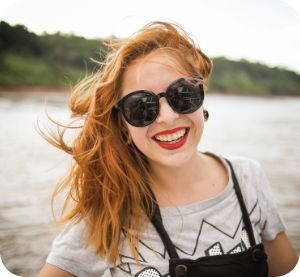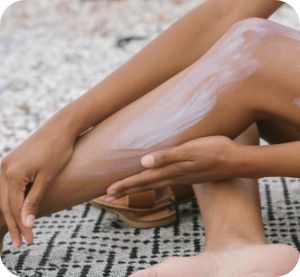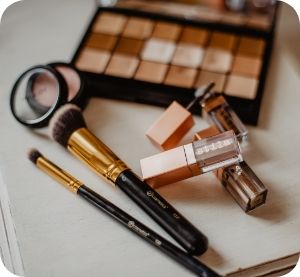Protect your skin
You cannot affect the genetically determined predisposition for melanoma, such as having a fair complexion or a family history of melanoma. However, UV radiation is clearly the predominant environmental and thus potentially modifiable risk factor. Your personal risk of melanoma can be significantly reduced by following these basic rules:

Exposure to the sun
Sudden, intensive and direct exposure to the sun should be avoided. The main objective is to prevent sunburns, i.e. skin redness after sun exposure. The most harmful sunburns are those that produce blisters or pain for at least 48 hours. Between 12 am and 3 pm half of the daily solar ultraviolet dose reaches the earth. Staying out of the midday sun significantly reduces the risk of sunburn (1).
There are different types of sun exposure:
- Incidental sun exposure - time spent outdoors on sunny days during routine daily activities
- Recreational sun exposure – time spent enjoying recreational or sports activities outdoors in the sun
- Occupational sun exposure – time spent by people working outdoors (farmer, fisherman, life guard, postal or maintenance working etc.)
- Intentional sun exposure – time spent outside with the deliberate aim of getting a suntan

Clothing
Clothing provides an excellent and inexpensive protection from intensive sunlight. Dark colored clothing are more efficient than light colored ones. Synthetic materials such as elastane, acrylic and polyester are denser than natural materials such as cotton or wool and should be preferred. The UPF (Ultraviolet Protection Factor) on UV protection clothing indicates how much of the sun's UV radiation is absorbed by a fabric. A UPF of 50 for example allows just 1/50th of the UV radiation to penetrate. Nowadays, a wide range of affordable, breathable clothes and swimwear with high UPF (50+) is available for all ages. In addition to covering as much skin as possible, it is recommended to wear a wide-brimmed hat and sunglasses.

Sunscreen
Should be regarded as an additional measure to seeking shade and covering clothing and is not to be used to prolong intentional sun exposure. The Solar Protection Factor (SPF) indicates the radiation needed for a sunburn (mainly caused by UVB) in protected skin compared to unprotected skin. So if you use an SPF 30 product exactly as directed, it will take you 30 times longer to burn than if you weren’t wearing sunscreen.
Besides UVB protection, UVA radiation should not be neglected since it penetrates deeper in the skin and causes photoaging. A circled UVA (UVA Circle symbol) on products in Europe indicates that the UVA protection achieves at least a third of the indicated SPF.
It should be noted that the SPF depends on a regular application (every two hours) and the amount applied (2 mg/ cm² of skin). This amount is equivalent to 35 g of cream for the whole body for an adult of standard height and weight. If applied correctly sunscreen reduces development of new moles, acute ultraviolet damage, actinic keratoses and non-melanoma skin cancer (2, 3, 4).
Two different filters are used in sunscreens: organic and inorganic. The differences are listed in the table.
It is advised to use a water-resistant, broad-spectrum sunscreen with an SPF of 30 or higher.

Medicines and cosmetics
Some medications can increase the skin's sensitivity to the sun. Antibiotics, non-steroidal anti-inflammatory drugs (Ibuprofen, celecoxib), diuretics, statins, retinoids and antifungals are commonly used photosensitizing drugs. This is something that should be discussed with a doctor or pharmacist before exposing oneself to the sun. Deodorants, cosmetics and perfumes can cause undesirable effects in the sun like photoallergy or permanent pigmentation. Application of such products should therefore be avoided before sunbathing.

Shade/temperature
Being in the shade when outside can still lead to sunburn from reflected UV rays unless additional sun protection measures are used. The sun’s rays do penetrate clouds so your skin can still become sunburnt even on overcast days. Remember that UV rays do not make your skin feel hot, so breezes may give you a false sense of safe sun exposure.
References
(1) Blázquez-Sánchez et al. 2021 - Photoprotection habits, attitudes and knowledge among school communities in the Costa del sol (Spain)
(2) Gallagher et al. 2000- Broad-spectrum sunscreen use and the development of new nevi in white children: a randomized controlled trial
(3) Lautenschlager et al. 2007 - Adverse Reactions to Sunscreens
(4) Lee et al. 2005 - Site-specific protective effect of broad-spectrum sunscreen on nevus development among white schoolchildren in a randomized trial